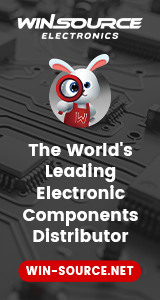Understanding and optimizing delamination/recycling of printed circuit boards using a supercritical carbon dioxide process
Published: |
September 2, 2024 |
Author: |
Sriya Sanyal, Qingdi K , Yuan Zhang, Thao Ngo, John Carrell, Hongchao Zhang, Lenore L. Dai |
Abstract: |
A printed circuit board (PCB) is an integral component of any electronic product and is among the most challenging components to recycle. While PCB manufacturing processes undergo generations of innovation and advancement with 21st century technologies, the recycling of PCBs primarily employs 1920's shredding and separation technologies. There is a critical need for alternative PCB recycling routes to satisfy the increasing environmental demands. Previous work has developed an environmentally benign supercritical fluid process that successfully delaminated the PCB substrates and separated the PCB layers. While this work was successful in delamination of the PCB substrates, further understanding is needed to maximize the interactions between the supercritical fluid and PCB for an optimal processing scenario. As such, this research presents an exploratory study to further investigate the supercritical fluid PCB recycling process by using supercritical carbon dioxide and an additional amount of water to delaminate PCB substrates. The focus of this study is to test delamination success at low temperature and pressure supercritical conditions in comparison to the previous studies. Furthermore, material characterization methods, such as differential scanning calorimetry, dynamic mechanical analysis, and Fourier transform infrared spectroscopy, are included to study the delaminating mechanisms. Results from the recycling process testing showed that the PCB substrates delaminated easily and could be further separated into copper foils, glass fibers and polymers. Surprisingly, the material characterization suggested that there were no significant changes in glass transition temperature, crosslink density, and FTIR spectra of the PCBs before and after the supercritical fluid process.... |
|
|
|
Company Information:
More articles from Arizona State University »
- Oct 08, 2020 - Optimized Stress Testing for Flexible Hybrid Electronics Designs
- See all SMT / PCB technical articles from Arizona State University »
More SMT / PCB assembly technical articles »
- Aug 20, 2024 - Thermal Interface Materials Drive Electronic Innovation | GPD Global

- Aug 20, 2024 - Underfill Materials Dispensing in Electronics Manufacturing Applications | GPD Global

- Jul 15, 2024 - Transforming LED Manufacturing: I.C.T Engineers Set Up Complete Production Line in Tajikistan | I.C.T ( Dongguan ICT Technology Co., Ltd. )

- Jun 20, 2024 - Case study: Precise Coating on Electronic Hearing Devices | ASYMTEK Products | Nordson Electronics Solutions

- Mar 19, 2024 - What is Underfill | GPD Global

- Browse Technical Library »
Understanding and optimizing delamination/recycling of printed circuit boards using a supercritical carbon dioxide process article has been viewed 56 times






